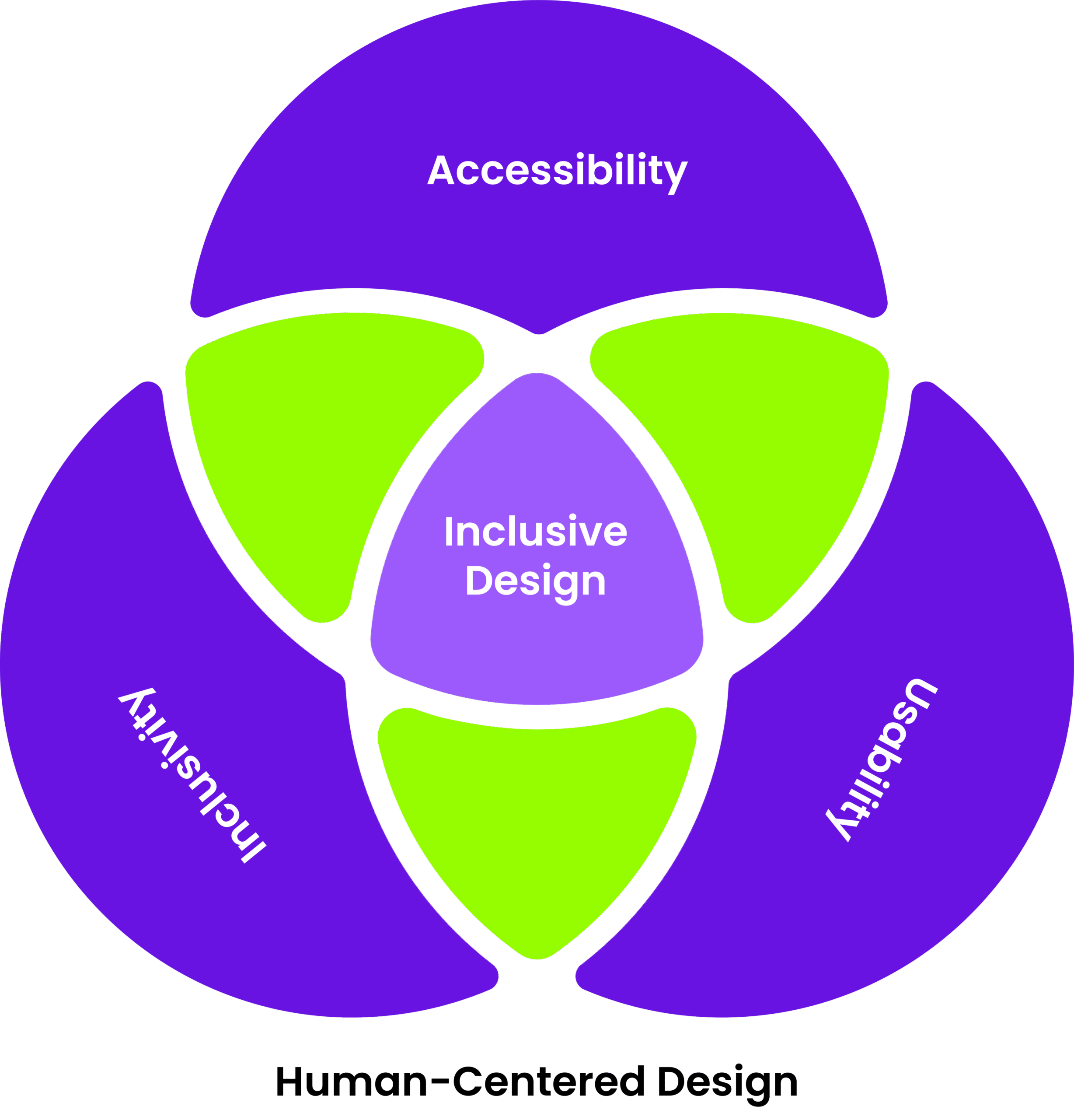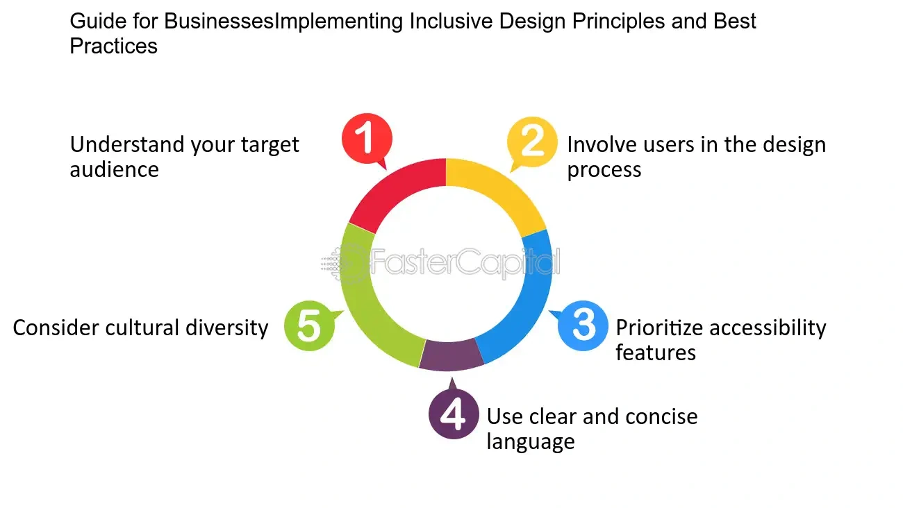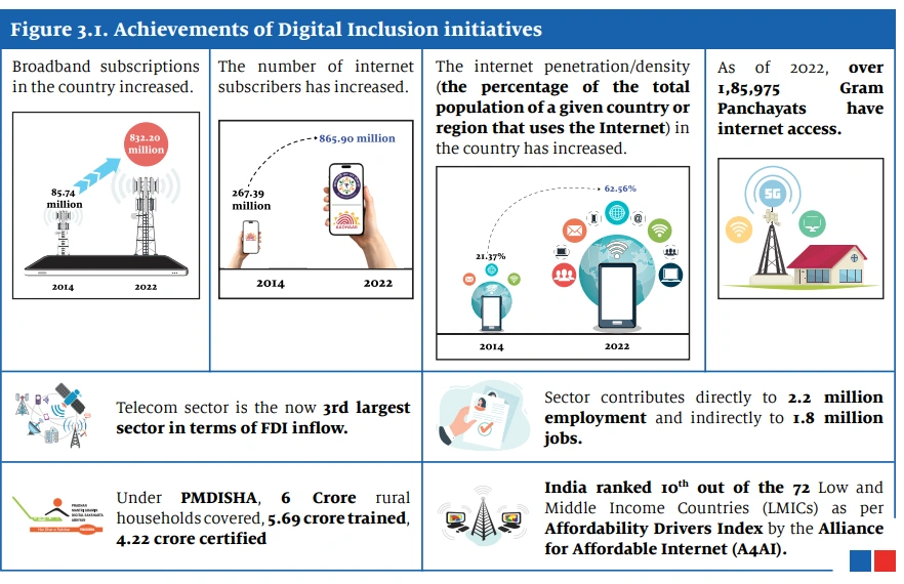You might be surprised to learn that inclusive design in India isn’t just a bonus feature—it’s vital to connect with a diverse population of over 1.3 billion people.
About 8% of India’s population lives with some form of disability. Many others face hurdles due to language barriers, digital literacy gaps, or socioeconomic factors. Making products available isn’t just smart business—it’s a legal must under the Rights of Persons with Disabilities Act, 2016.
Designers face unique challenges in India. The country’s rich tapestry of languages and dialects demands solutions beyond a one-size-fits-all approach. On top of that, the varying digital literacy levels across regions call for an easy-to-use interface that works for everyone, no matter their tech background.
Let’s understand inclusive design and how it stands apart from universal design. Inclusive design creates experiences that embrace human diversity in all its forms. Universal design aims for one solution that fits all, but inclusive design principles recognize different user needs and offer multiple paths to success.
This piece shares practical strategies to implement inclusive design that works in the Indian market. We’ll look at ways to spot exclusion early and learn from user groups of all kinds. You’ll find examples of inclusive design that have successfully guided through India’s complex digital world—helping you build products that strike a chord with this dynamic, multifaceted market.

Understanding the Indian User Landscape
The Indian market shows an array of user needs that designers must guide while creating inclusive experiences. Designers need to understand three key dimensions that shape how Indians interact with digital products.
Language, culture, and regional diversity
Indian linguistic diversity poses one of the biggest design challenges. The country has over 20 prominent regional languages and hundreds of other spoken languages. This diversity goes beyond simple translation. It alters how users process information, interpret visual cues, and direct themselves through interfaces. What works for one community might be irrelevant or inappropriate for others. Design teams must consider both linguistic differences and cultural sensitivities that vary dramatically by region. Local customs can change the meaning of icons, imagery, and even element ordering.
Digital literacy and access gaps
Urban and rural India face a clear digital divide. Urban areas show a digital literacy rate of 61%, while rural areas lag at just 25%. The gap extends to computer ownership too. Rural households’ computer ownership stands at 4.4% compared to urban areas’ 23.4%. Internet usage follows a similar pattern – 31% of rural residents use the internet versus 67% of urban dwellers. This means inclusive experiences must work for users with different digital skills. About 70% of India’s population has poor or no access to digital services. Designs must work smoothly under these constraints.
Socio-economic and ability-based differences
Economic gaps limit technology access substantially. The poorest 20% of households show minimal digital presence – only 2.7% own computers and 8.9% have internet facilities. Digital devices cost around ₹20,000 on average, yet these households’ average income is just ₹25,825. The numbers tell a clear story of economic barriers. India’s disabled population of about 100 million needs special consideration in design decisions. Yet most Indian websites, including government portals, remain out of reach for people with disabilities. This highlights the gap between what policies promise and what actually happens.
What is Inclusive Design and Why It Matters
Inclusive design means more than making products available—it’s a methodology that welcomes human diversity in all forms. Traditional approaches treated disability as an afterthought. Modern inclusive design blends diverse needs right from the start of creation.

Inclusive design meaning vs accessibility
These terms might sound similar but represent different concepts. Accessibility makes sure people with disabilities can use products and services without barriers. Standards and technical requirements define accessibility. Inclusive design takes a broader view by looking at age, economic situation, geographic location, language, race, and culture. Accessibility represents a minimum requirement—an outcome. Inclusive design provides the complete methodology that guides us to and beyond that outcome.
Inclusive design vs universal design
Both want to remove barriers, but universal design and inclusive design take different paths. Universal design looks for one solution that works for everyone. Inclusive design recognizes that different user groups might need various solutions to reach the same goals. Rather than forcing everyone into one approach, inclusive design welcomes variety and adaptation. This makes inclusive design especially valuable in the digital world, where interfaces can adapt to meet different needs.
Benefits for users and businesses
Companies that prioritize inclusive design practices show impressive results. They generate 1.6 times more revenue, 2.6 times more net revenue, and twice as much profit as competitors. Organizations that adopt diversity and inclusion are six times more likely to create new things and twice as likely to achieve financial goals.
You need to think about diversity when designing for India. Regional languages, cultural nuances, and device availability all matter—find out how inclusive UX can realize deeper engagement across India’s big user base.
Inclusive design creates welcoming experiences instead of excluding people. About 15% of the global population—roughly one billion people—lives with some form of disability. Inclusive design gives these individuals equal access while making experiences better for everyone.
Challenges in Designing Inclusive UX for India
Designers face unique challenges when creating inclusive designs in India. The country’s expanding digital world brings complex requirements that need thoughtful solutions.
Adapting to multiple languages and scripts
Language diversity stands as one of the toughest barriers to inclusive design in India. The country recognizes 23 official languages, and dialects change every few kilometers. This creates major localization challenges for designers. Research shows 63% of users prefer content in their native language, which makes language adaptation crucial. Technical hurdles add another layer of complexity. Translated text needs different space allocations that can disrupt layouts. Text translation from English to regional languages makes it hard to keep the original tone. Designers must choose between translating technical terms or keeping them in English when users already know them.
Addressing cultural sensitivities
Cultural elements shape how users interact with digital products. Colors mean different things across regions – something that celebrates life in one area might represent death in another. Metropolitan users’ familiar symbols might puzzle rural users. A design that works for one community could push away neighboring groups, even when they live close by. Good inclusive design recognizes these subtle differences without creating stereotypes.
Designing for low digital literacy
About 775 million people worldwide can’t handle simple literacy tasks, which limits their digital abilities. Users with low digital literacy shy away from complex features and stick to voice communication. Research shows these users blame themselves instead of the technology when problems occur. Too many choices overwhelm them. They worry about damaging the system, lack confidence to fix issues, and get lost in technical error messages.
Ensuring accessibility for all abilities
More than 63 million Indians live with severe visual impairments, and over 20 million face motor disabilities. This makes accessibility non-negotiable. Small tap targets, missing image descriptions, confusing navigation, and color-dependent status indicators create common problems. Motor-impaired users find touch screens particularly challenging without proper support like gesture alternatives or voice controls.
Principles and Strategies That Actually Work

Image Source: FasterCapital
Creating digital products that work for India’s diverse population requires effective inclusive design principles. Microsoft’s approach to inclusive design shows practical strategies that companies can adapt for the Indian market.
Recognize exclusion early
Our own biases often lead to exclusion when designing solutions. The first step is identifying users who might not be able to use your product. The Indian context raises important questions: Can rural users with basic phones access this? Will a Tamil-only speaker be able to direct themselves through this interface? Early identification of these exclusion points creates opportunities for state-of-the-art solutions.
Learn from diverse user groups
People remain central throughout the inclusive design process. The Indian context requires teams that represent:
- Multiple age groups and cultural backgrounds
- Different socioeconomic levels
- Various language speakers
- People with different abilities
These varied views lead to genuine insights. This becomes particularly important in India where regional and cultural differences shape user needs significantly.
Solve for one, extend to many
This principle shows how designs for people with permanent disabilities help everyone. To cite an instance, see how transcripts made for hearing-impaired users help people on crowded Indian trains. High-contrast screens, originally created for visually impaired users, help anyone using devices in bright sunlight—a common Indian scenario.
Use inclusive design principles in UI decisions
The practical application includes:
- Multilingual support in popular Indian languages
- Easy-to-use interfaces for different digital literacy levels
- Multiple interaction methods (touch, voice, keyboard)
- Clear visual hierarchy with consistent navigation
- Design elements that strike a chord with local users culturally
Test with real users from different backgrounds
India’s big diversity demands testing that mirrors real user demographics. Key factors include:
- Regional representation across India
- Different technology skill levels
- Various socioeconomic groups
- Users with disabilities
A researcher points out, “Given the cultural diversity in India, product teams outside India may have biases and misconceptions about Indian users”. This makes testing with actual users vital. Read now to build digital experiences that truly connect with every Indian user.
Examples of Inclusive Design in the Indian Market

Image Source: Vision IAS
Indian companies have created solutions that tackle unique market challenges by applying inclusive design principles.
Google Navlekha for regional publishers
Google’s Project Navlekha (meaning “a new way to write” in Sanskrit) fills a crucial gap in online Indian language content. The platform helps local publishers without websites convert their offline content into digital format in less than a minute. It serves 135,000 Indic language publications. The system uses AI technology to convert PDFs with Indian language content into editable text, which solves common PDF text extraction issues. Hindi publications can now access free hosting, a branded domain for three years, and AdSense support to start earning money right away.
Ola’s accessibility features
Ola, India’s leading mobility platform, has improved its app based on guidance from the Court of Chief Commissioner for Persons with Disabilities. The changes help visually impaired users who faced problems with poorly organized services, unlabeled buttons, and unusable images. Users can now add their disability status to their profile so drivers know about passengers with special needs. The company trains its drivers to assist passengers with different disabilities.
HUL’s Project Shakti for rural women
Hindustan Unilever Limited’s Project Shakti shows how inclusive design can break down socioeconomic barriers. The initiative started in 2001 to help underprivileged rural women become micro-entrepreneurs. What began with 17 women in two states grew to include 165,000 Shakti Entrepreneurs across 18 states by December 2021. The program changed lives significantly – 95.3% of participants now make their own financial decisions, and 97.7% feel more respected due to financial independence.
IDFC Aadhaar ATMs for low-literacy users
IDFC Bank developed micro-ATMs that work as “bank-in-a-box” devices at just one-tenth the cost of regular ATMs. These devices let users access banking services using their mobile numbers, Aadhaar numbers, debit cards, or bank account numbers. The system helps people with low literacy through biometric authentication. IDFC Bank now operates in 16 states, bringing banking services to villages where people previously had to travel 10 kilometers to find an ATM.
Conclusion
Designing for Inclusivity: The Path Forward
Creating digital products for India’s diverse population demands inclusive UX design as a basic requirement, not just an optional feature. This article takes a closer look at how language barriers, cultural nuances, digital literacy gaps, and accessibility needs define the complex Indian market landscape.
The difference between inclusive design, universal design, and accessibility becomes apparent by dissecting successful implementations. Universal design aims for a single solution that works for everyone. In contrast, inclusive design recognizes diverse needs and creates multiple pathways to success—making it especially valuable for India’s varied user base.
These benefits go beyond social responsibility. Companies that accept new ideas in inclusive design generate substantially higher revenue and breakthroughs compared to their competitors. On top of that, these practices create experiences that welcome millions of Indians who face various barriers.
Inclusive design works best when we are willing to spot exclusion points early and turn them into opportunities. Learning from users of all backgrounds gives real insights that lead to meaningful solutions. The principle of “solving for one, extending to many” shows how designs that address specific disabilities help all users—whatever their ability level.
Success stories like Google Navlekha, Ola’s accessibility features, HUL’s Project Shakti, and IDFC’s Aadhaar ATMs demonstrate the positive effects of thoughtful inclusive design in India. These examples prove that addressing unique market challenges creates products that appeal to users from all backgrounds.
Note that inclusive design is an ongoing experience rather than a destination. The landscape evolves with advancing technology and changing user expectations. Designers who understand India’s diverse needs, test with representative users, and apply inclusive principles create digital experiences that connect with every Indian user. This approach builds products that work for everyone, whatever their background, ability, or circumstances.
FAQs
Q1. Why is inclusive design important for the Indian market? Inclusive design is crucial for the Indian market due to its diverse population of over 1.3 billion people, with varying languages, cultures, digital literacy levels, and abilities. It ensures that products and services are accessible and usable by a wide range of users, leading to increased engagement, revenue, and innovation for businesses.
Q2. How does inclusive design differ from universal design? While both aim to eliminate barriers, inclusive design acknowledges that different user groups may need multiple design solutions to achieve the same goals. Universal design seeks one solution for all, whereas inclusive design embraces variety and adaptation to meet diverse needs.
Q3. What are some key challenges in designing inclusive UX for India? Major challenges include adapting to multiple languages and scripts, addressing cultural sensitivities, designing for low digital literacy, and ensuring accessibility for users with different abilities. These factors require thoughtful solutions and consideration of India’s unique landscape.
Q4. Can you provide examples of successful inclusive design in India? Some successful examples include Google Navlekha for regional publishers, Ola’s accessibility features for users with disabilities, HUL’s Project Shakti empowering rural women, and IDFC Aadhaar ATMs designed for low-literacy users. These initiatives demonstrate how inclusive design can effectively address diverse user needs in the Indian market.
Q5. What are some key principles for creating inclusive UX in India? Important principles include recognizing exclusion early, learning from diverse user groups, solving for one and extending to many, using inclusive design principles in UI decisions, and testing with real users from different backgrounds. These strategies help create digital experiences that truly connect with India’s diverse user base.